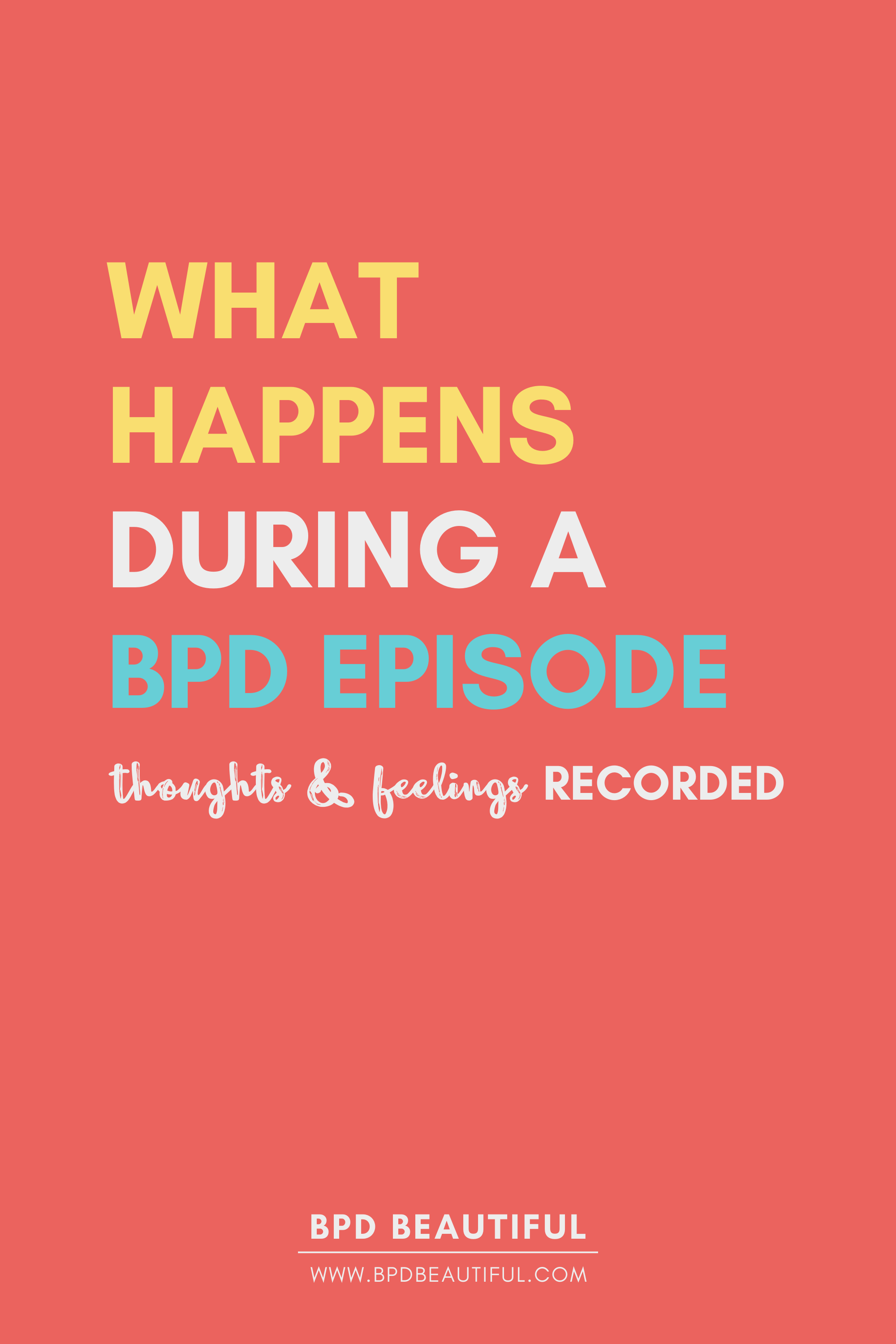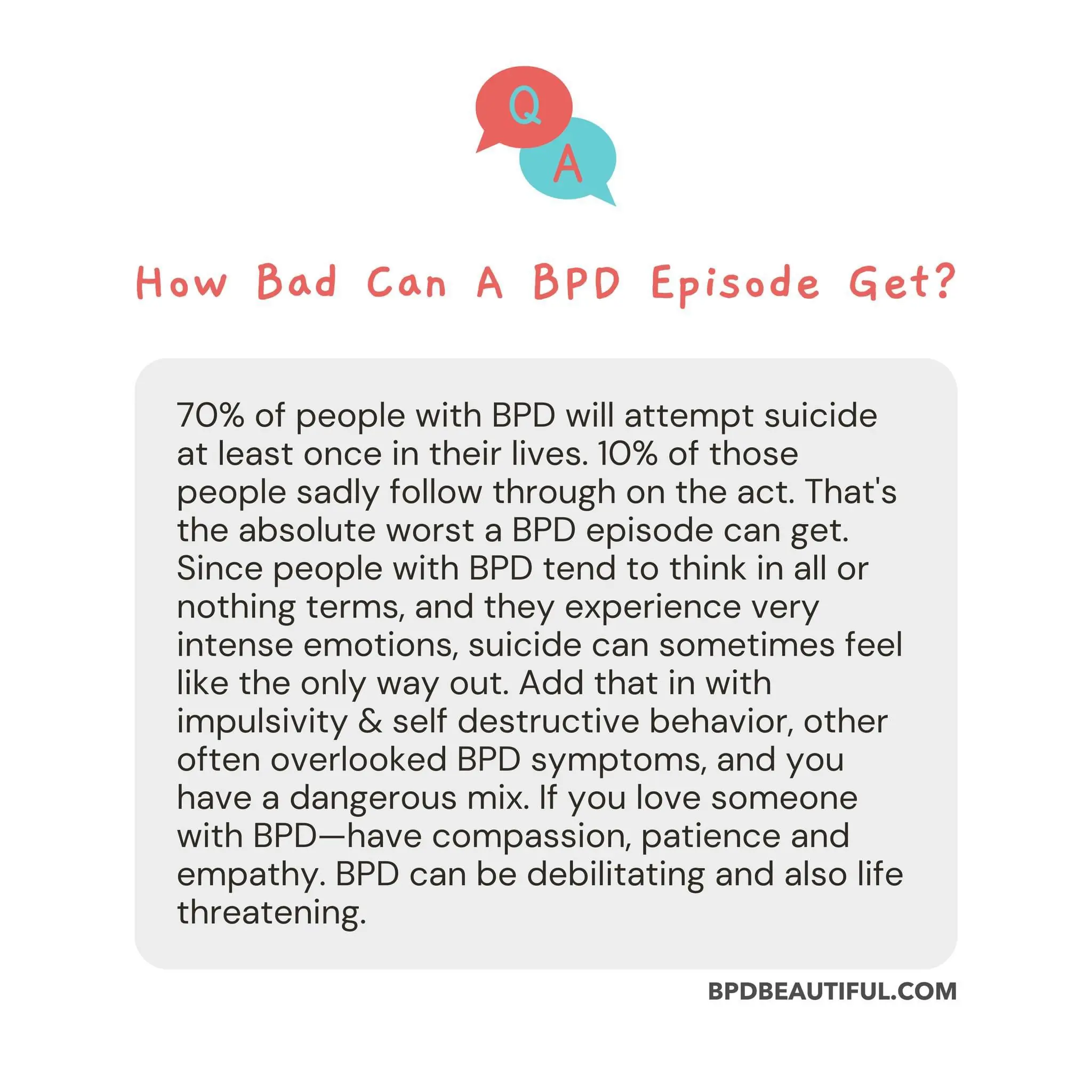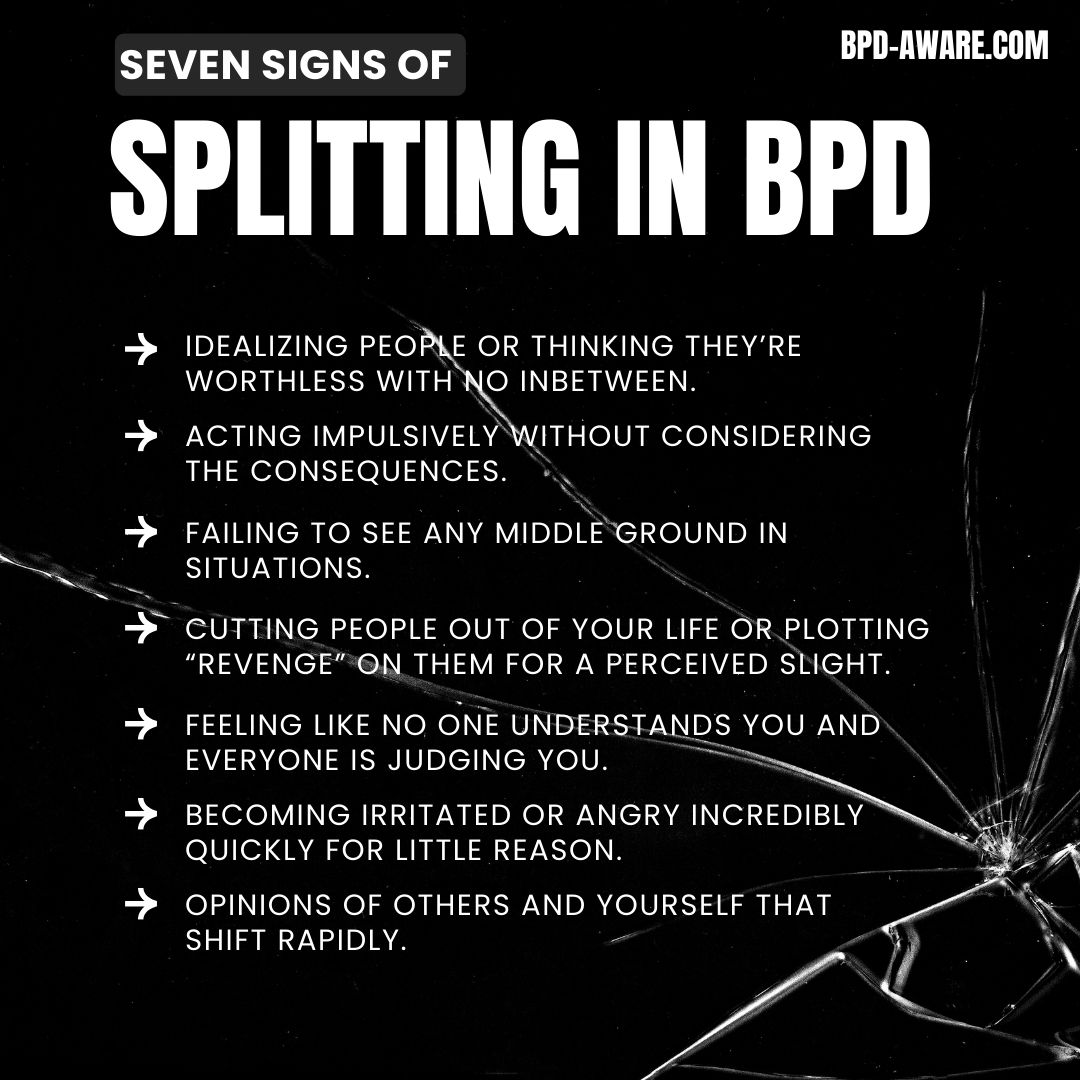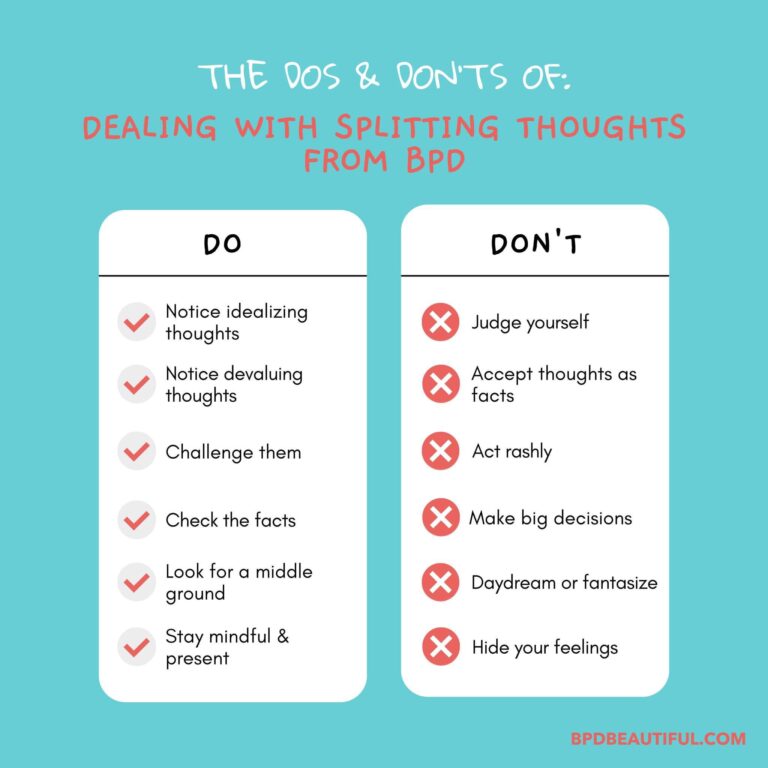What Do Bpd Episodes Look Like
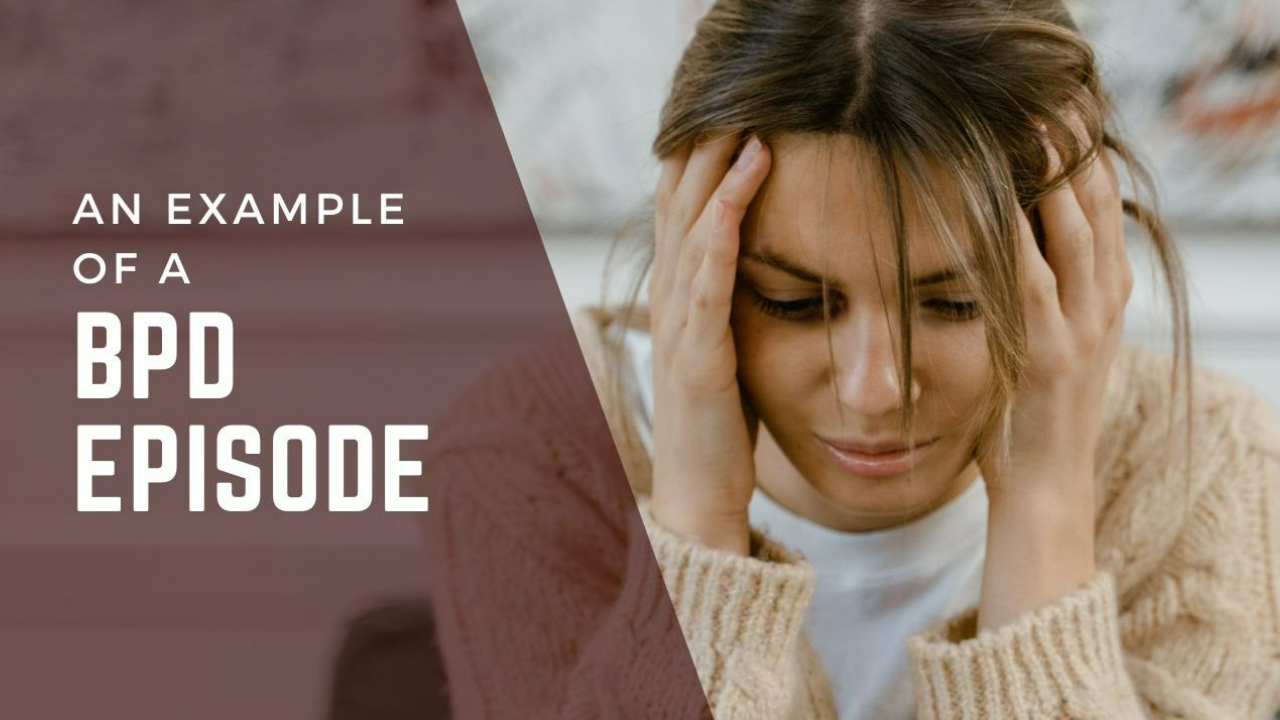
Borderline Personality Disorder (BPD) episodes can be terrifying and destabilizing, characterized by intense emotional shifts and impulsive behaviors. Understanding the specific manifestations of these episodes is crucial for both those living with BPD and their loved ones.
This article breaks down the key features of BPD episodes, offering a clear view of the emotional and behavioral rollercoaster individuals experience.
Emotional Intensity: The Core of a BPD Episode
BPD episodes are often triggered by perceived abandonment or relationship stress. These triggers unleash a surge of intense emotions, far exceeding typical reactions.
Individuals may experience overwhelming anxiety, depression, and rage, fluctuating rapidly and unpredictably.
Emotional Volatility
Emotions can shift within minutes, from intense happiness to profound despair. This rapid cycling is a hallmark of BPD.
According to the National Education Alliance for Borderline Personality Disorder (NEABPD), this emotional dysregulation stems from neurological differences affecting emotional processing.
Episodes are not merely mood swings; they are profound, destabilizing experiences.
Fear of Abandonment
A central feature of BPD is an intense fear of abandonment, both real and perceived. This fear can trigger episodes of extreme behavior.
Individuals may engage in desperate attempts to avoid abandonment, such as excessive calling, pleading, or even threats.
These behaviors, while often counterproductive, are driven by genuine terror.
Behavioral Manifestations: Actions Driven by Distress
The intense emotions of a BPD episode frequently manifest as destructive behaviors. These actions are often attempts to cope with overwhelming feelings.
Self-harm, impulsivity, and interpersonal difficulties are common hallmarks of an episode.
Self-Harm and Suicidal Ideation
Self-harm, including cutting, burning, or scratching, is a frequent coping mechanism during BPD episodes. According to the American Psychiatric Association, this behavior is often a way to regulate intense emotions, not necessarily a suicide attempt.
However, suicidal ideation is also a significant risk. It’s crucial to take all threats of self-harm seriously.
Immediate intervention is needed when self-harm or suicidal thoughts are present.
Impulsive Behaviors
Impulsivity is another key feature of BPD episodes. This can manifest as reckless spending, substance abuse, binge eating, or risky sexual behavior.
These behaviors provide temporary relief from emotional distress, but often lead to negative consequences.
These impulsive actions are not simply poor choices; they are driven by an urgent need to escape overwhelming feelings.
Interpersonal Difficulties
BPD significantly impacts relationships. Individuals may experience intense, unstable relationships, characterized by idealization and devaluation – often referred to as "splitting."
They may swing from seeing someone as perfect to viewing them as completely worthless.
According to research published in the Journal of Personality Disorders, this splitting is a defense mechanism against overwhelming emotional pain.
Cognitive Distortions: Altered Perceptions
During a BPD episode, thinking patterns can become distorted. This impacts perception of self, others and the world.
These distortions can worsen the severity and duration of the episode.
Dissociation
Dissociation, feeling detached from reality or oneself, is another common symptom. This can manifest as feeling like you're watching yourself from outside your body.
It's a defense mechanism against overwhelming trauma and emotional distress.
Dissociation serves as a mental escape route when emotions become unbearable.
Paranoia
Brief periods of paranoid thinking can occur during intense episodes, especially when triggered by relationship stress. This paranoia is often related to fear of abandonment.
They might believe someone is plotting against them or trying to hurt them.
While usually temporary, paranoid thoughts can significantly increase distress and fuel impulsive behaviors.
Responding to a BPD Episode: Key Considerations
Understanding what BPD episodes look like is crucial for both the individual experiencing them and those providing support. Reacting appropriately can minimize harm and facilitate recovery.
Remaining calm, setting clear boundaries, and encouraging professional help are essential.
Dialectical Behavior Therapy (DBT) is a highly effective treatment for BPD, teaching individuals coping skills to manage intense emotions and improve interpersonal relationships.
If you or someone you know is experiencing a BPD episode, it is important to seek professional help immediately. The National Suicide Prevention Lifeline is available 24/7 at 988.
Continued research and understanding of BPD are crucial to improving treatment and supporting individuals living with this complex disorder.





